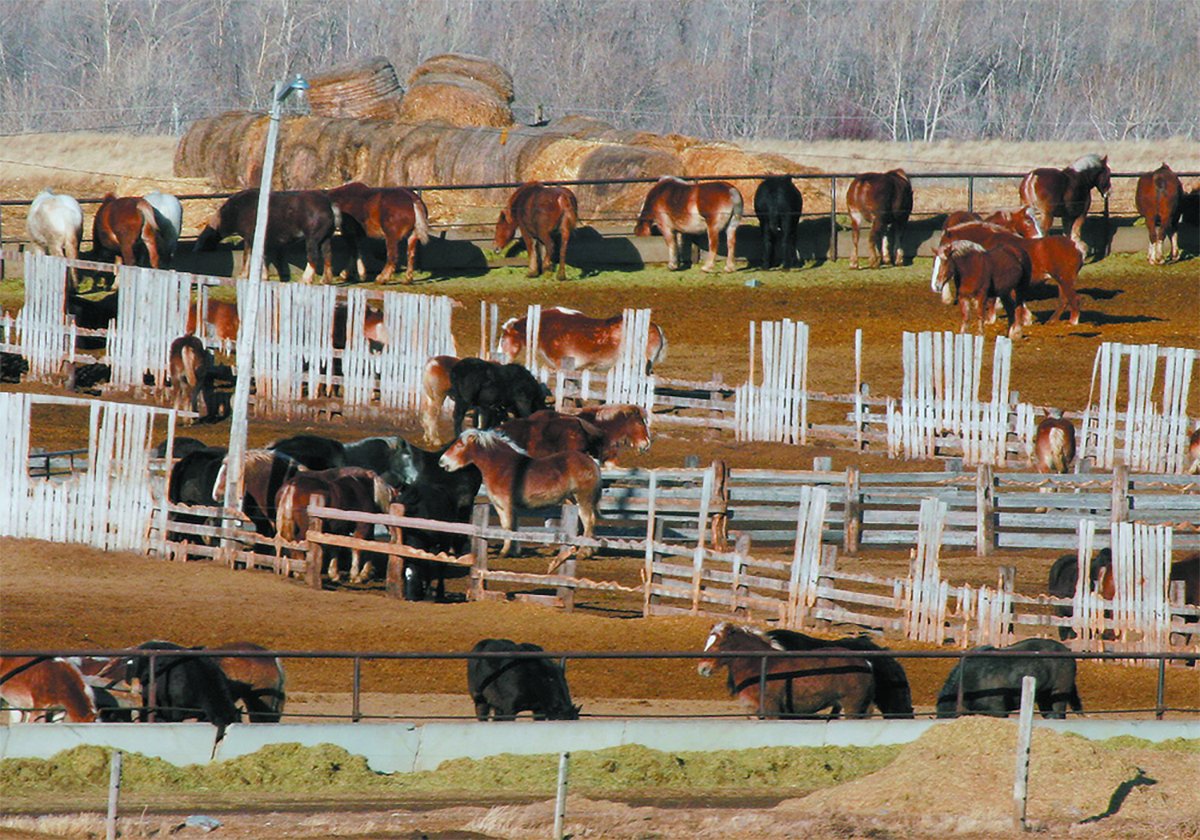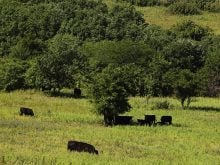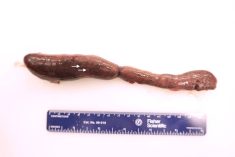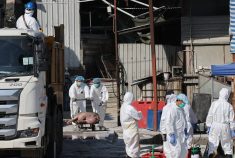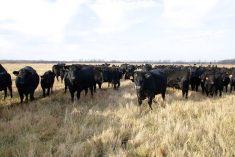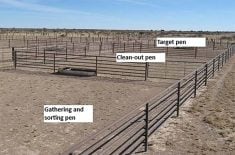I didn’t set out to investigate horse slaughter. I was simply trying to trace the lives of horses, where they went after the auction ring and what future awaited them if they didn’t find a home.
What I uncovered instead was a murky trail of fragmented data, shifting export markets, questionable industry practices and a stunning lack of transparency.
Canada’s horse slaughter industry historically handled tens of thousands of horses a year.
Read Also
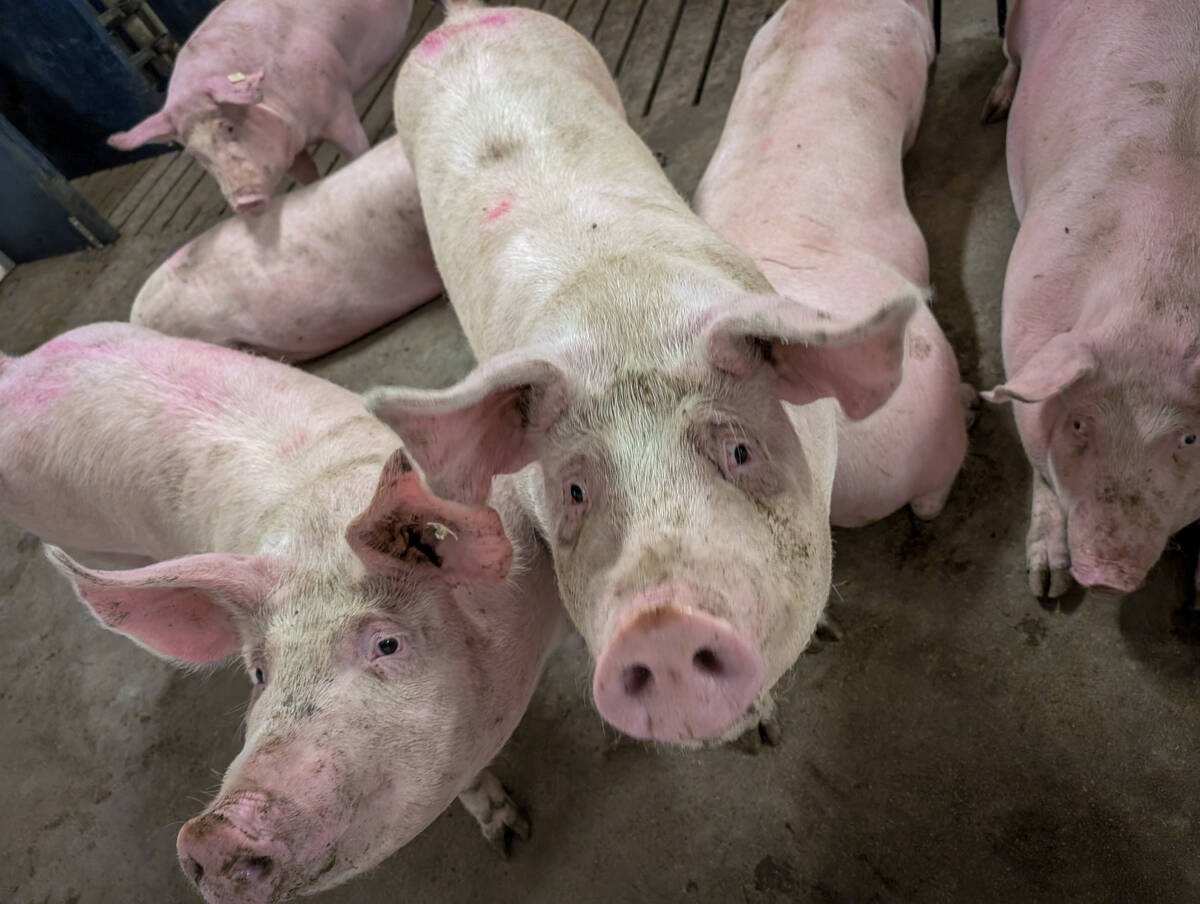
Pork sector targets sustainability
Manitoba Pork has a new guiding document, entitled Building a Sustainable Future, outlining its sustainability goals for the years to come.
At its peak, more than 100,000 horses were slaughtered annually, many imported from the United States after U.S. slaughter plants closed in 2007.
These horses, sometimes young and healthy, often unwanted or surplus, were shipped for processing with meat exported to Europe and Asia.
In addition, the pharmaceutical industry, particularly pregnant mare urine (PMU) farms, historically contributed horses to the slaughter pipeline. While the PMU industry has declined, its impact continues to shape the movement of horses.
While horse slaughter may be unfortunate, it serves a practical role: unwanted horses in Canada and the U.S. provide meat for markets in Japan, France and other parts of Asia.
Even so, necessity does not absolve the industry from responsibility. There must be accountability in the transition from companion animal to livestock, including traceability, humane handling and ethical oversight at every stage.
Recent estimates suggest that domestic slaughter has dropped dramatically. From highs of more than 80,000 to 100,000 horses annually, numbers now appear closer to 15,000 to 25,000. This shift is due largely to several converging factors.
Tens of thousands of American horses entered Canada each year for slaughter, but advocacy campaigns and stricter U.S. regulations sharply curtailed this flow. Today, the majority of U.S. horses go to Mexico for slaughter rather than Canada, though some still enter Canadian facilities.
The European Union introduced requirements for drug history and traceability, making it harder for Canadian plants to export meat without full documentation. Japan has also increased scrutiny, particularly for live exports.
The number of federally licensed slaughterhouses has dwindled, with Alberta’s Bouvry Exports and Quebec’s Viande Richelieu dominating the landscape.
These two sister companies are corporately related, and while Bouvry has feedlot capabilities, the Granum Prime Feedlot has been shut down following legal scrutiny.
It is important to note that the Fort Macleod slaughter plant remains operational under Canadian Food Inspection Agency oversight.
The 2025 fine against Bouvry addressed past violations at the Granum feedlot but did not mandate closure, allowing the Fort McLeod facility to continue processing horses at reduced capacity.
While headlines may suggest shutdowns or fines signal the end of the industry, in practice, processing continues — quietly, persistently and largely out of public view.
One of the greatest challenges in understanding the horse slaughter industry is the lack of clear, publicly accessible data.
Federal reporting on horse slaughter ceased in 2017, and while organizations and advocates attempt to fill the gaps, discrepancies and missing information persist.
This absence of disclosure, whether due to fragmented regulation, corporate practices or systemic oversight issues, makes it nearly impossible to trace horses from auction to slaughter, monitor welfare standards or fully understand the impact of related industries.
Highlighting these blind spots is essential: without transparency, accountability remains out of reach, and the true scale and conditions of the industry stay hidden from public and regulatory scrutiny.
The persistence of opaque practices in the horse slaughter industry suggests that concentrated corporate power, political influence and regulatory limitations all play a role.
Large processing companies maintain significant leverage through economic arguments — jobs, trade revenues and market stability, which can slow legislative reforms or complicate enforcement.
Regulatory agencies, reliant on industry data and expertise, face challenges in monitoring welfare and traceability, while cross-border trade adds layers of complexity that obscure oversight.
These factors together create a system where transparency is limited, accountability is difficult and ethical scrutiny is often delayed or diluted, leaving the welfare of horses vulnerable to gaps in governance and industry influence.
Live exports for slaughter remain a small fraction of total horses, but they are ethically significant.
Roughly 2,000 to 3,000 horses are shipped annually from Canada to Japan, mostly draft breeds, enduring long flights in containment shipping. Public concern has mounted over the lack of transparency and oversight.
Bill C-355, introduced in 2023, aims to prohibit the export of live horses for slaughter. Yet progress is slow, and industry influence remains strong.
The lack of clear reporting and public access to data keeps the industry largely hidden, leaving questions about humane treatment and traceability unanswered.
Canada’s horse slaughter industry has changed dramatically, but it has not gone away. Transparency is key, both to protect the animals and to allow the public, policymakers and advocates to engage meaningfully.
Understanding this hidden system — its decline, consolidation, corporate connection and ethical challenges — is essential for anyone seeking to navigate the intersection of agriculture, animal welfare and international trade.
The lives of these horses deserve scrutiny, clarity and oversight, even in an industry where horses, once unwanted as companions, become economically valuable as livestock.
Dr. Carol Shwetz is a veterinarian, writer, and lifelong student of the horse, making her home in the countryside of Westlock, Alberta. Through her words, she offers a path toward a deeper understanding of the horse—one that honours both science and the wisdom of the horse itself.



